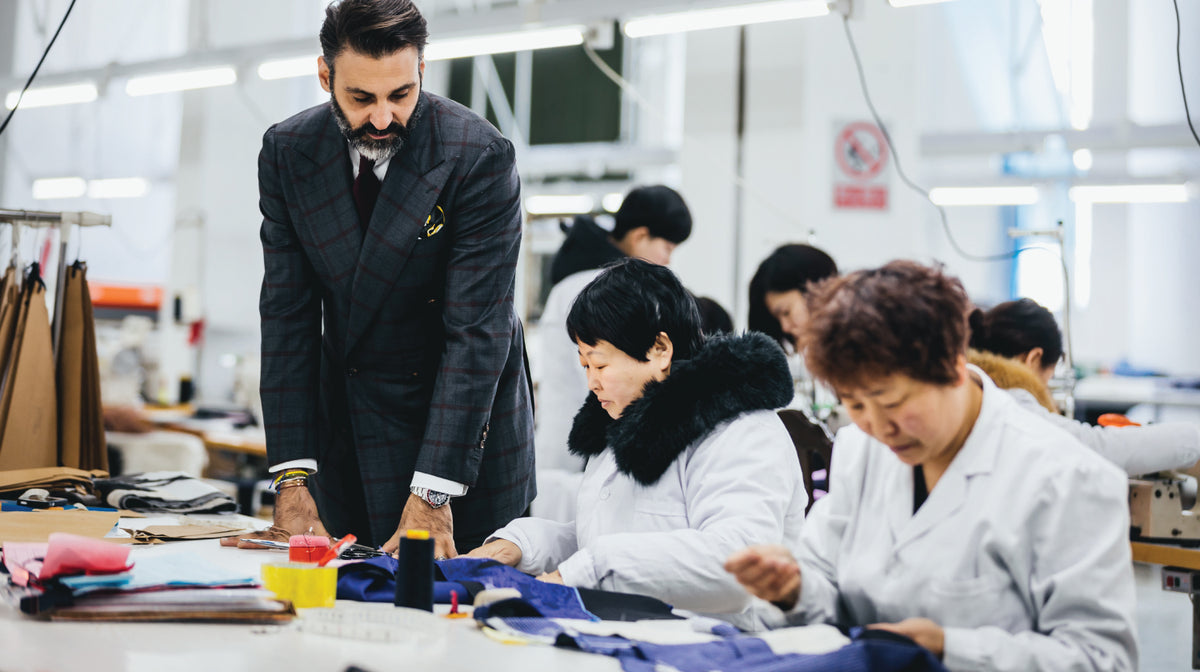
Artisans, tailors and the rest –
The bespoke and made-to-measure distinction
The first article to be published in our blog had to be about our lifeblood and passion. The true separation of bespoke tailoring from made-to-measure, is the difference between sartorial artisanship and the birth of the manufacturing industrial complex. So, we dive straight into murky waters and attempt to filter through the processes, misconceptions and essentially the difference between the two.
Derived from the term ‘bespoken’, when something is ‘bespoken for’ or in this case to denote a gentleman's ownership or selection of cloth, means the customer has selected fabric and is now ready to have it made into a garment. Originally cloth was purchased by a tailor for the store and displayed for customers to browse, touch and select. Once the cloth was chosen, that piece was cut and marked, it was now ‘bespoken for’ so called client.
The process of making a bespoke garment goes through several tedious stages, starting with the fitting. The body is measured and more importantly the posture details are noted and discussed with the pattern maker. This still is quintessentially the most important part of the entire process. The pattern maker would take the measurements, ad curves and draw the entire garment onto paper, this is called ‘the pattern’. This paper pattern is essentially your suit, jacket, trouser, overcoat, etc. If it's interpreted and drawn correct, your garment will fit with extreme comfort and aplomb.

The parallel between a pattern maker and an architect are much of a muchness. It’s in their experience, intelligence and inherent instinct that creates the masterpiece. The handing down of a pattern to a cutter is a partnership, somewhat like a marriage. Communication and trust are what bond this association, the finished pattern that is cut from the cloth is the result of laborious heavy cutting, band-aids and lengthy hand massages. The crafty scissor work of a cutter will determine how the garment is put together.
The tailors that sew the garment follow strict lines left by the cutter’s scissors. The finished cut fabric is put together with the pocket bags, linings and all the trimmings. The assembly of the garment is a team sport made up of veteran tailors, each a trained specialist bringing their skills to life through the finished garment. Putting together all the pieces is what you generally witness, yet the behind the scene pattern making and cutting is the work of the heroes unsung.
But before a garment is handed over, it is first sewn using a soft breakable cotton. This process is called ‘basting’, inevitably this is the testing of the fit, drape and aesthetic balance. Left inside is enough cloth to alter the shape and curves if needed as all adjustments can be made at this stage. Once approved, the basing thread are taken out and the garment can finally be sewn together.

Prior to the birth of mass manufacturing, bespoke tailoring was the sole modus operandi for making men’s suits, shirts, trousers, jackets, etc. The revolution of mass manufacturing introduced a drop-in quality and the impact of sustainability went from ‘being Green’ to just ‘making Green’. The core differences when comparing bespoke with made-to-measure, is the pattern. There are many differentiations between the two, but for the sake of keeping this short we will focus on the ‘pattern making’ process.
To simply put it, a bespoke pattern is made from ‘scratch’. Starting with the use of your body measurements then add to that the posture, shoulder drop, shoulder slope, shoulder roll, hip twists, arm fall, stance and all of the balances to deliver a garment that will gracefully sit around your neck and fall off your shoulders with superb drape – effortlessly.

Made-to-measure borrows a ready-made pattern, limited with adjustment options to fit your body. Changing curves, balance, etc. are not an option. For some people, this can work well with satisfaction, but the majority of men will need a high degree of detailed pattern adjustment to have it fit properly. alterations are limited once cloth is cut, the misconception is a garment can be fixed after. This is true with the basics for example, tapering and shortening/lengthening.
A whole book can be written with detail about the differences, but we chose to really focus on the pattern and fit. This was the whole reason for the creation of Sartoria Zimma, a boutique manufacturing facility that doesn’t compromise on fit, detail and quality. Our factory’s partners/customers proclaim the same philosophy as we do at ZIMMA TAILORS. There are a large group of tailoring businesses that are truly passionate about how the customer leaves their store, it is an unwritten understanding somewhat like a secret society with the hand shake being the bespoke principle.
